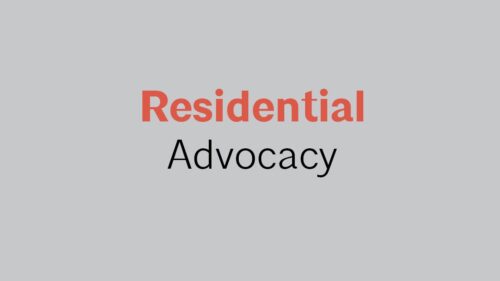AIA Austin, through its Advocacy Commission, is actively engaged with City of Austin staff to keep updated as to zoning and building code changes, specifically including the Residential Review and Inspections Departments. The purpose is to inform AIA Austin members of various code changes and City of Austin staff interpretations affecting architects and their practice.
Chair: Billy del Monte ()
Chair-Elect: Gina Andre, AIA ()
AIA Austin Staff Liaison: Ingrid Spencer ()
View and download the Advocacy Review Process flowchart

Resources:
City of Austin Code Interpretation Library
The following page provides useful information on how the City interprets and applies certain regulations in the Land Development Code (Title 25 of the City Code), including site development and subdivision regulations, as well as technical (construction) codes. For additional clarifications, or to add questions or requests for interpretations, email Residential Advocacy chairs Kim () and Oren ().
Link to City of Austin Code Interpretations
Wildland-Urban Interface
Austin Fire Department has issued an updated guide to the Wildland-Urban-Interface code. In January 2025, WUI Proximity areas will be called “zones” instead of “classes” so as not to confuse with the class system rating fire resistance of materials.
79189738_WUI Classes of Construction V1.8.pdf (austintexas.gov)
Some things to keep in mind:
- ALL of the materials used to comply with the code must be identified in the drawings and specs for the permit reviewers to confirm
- We have had projects approved using Class A fire retardant Flame Safe Fire Poly FP75E applied over combustible materials
- All gutters must be non-combustible and have leaf guards with maximum 1/8” openings per IWUIC Sec. V 504.4
- Austin amended the IWUIC to require 1/8”mesh in all vents instead of ¼” mesh.
City of Austin Tree Templates
The reference document below is a set of sample Tree Preservation Plans developed in consultation with the City of Austin Arborist Department. The plans illustrate different potential conditions for protected trees on a site, and provide examples of how to document compliance with City of Austin tree regulations, both in terms of content and graphics.
Plans Confidentiality:
Upon request, plans may be removed from the City of Austin’s public permit online search. The homeowner or applicant may request that the plans are marked as internal staff use images, and with this classification they will not appear on the AB+C portal. Individual requests may be sent to Mayra Rivera at
City of Austin Residential COVID-19 Resources
Recent Events:
Residential Advocacy Roundtable 6/27/2022 – City of Austin Variances
Residential Advocacy Roundtable 3/28/2022 – Tree Permitting Submittals, Reviews, and Plan Templates
2021 IRC Adoption:
Projects submitted after August 31, 2021 will need to comply with the 2021 IRC and local amendments.
Tree Review Changes
Beginning February 10, 2017, a separate Tree Ordinance Review Application (TORA) will no longer be required when submitting for residential plan review (PR). The application, fee, review, and issuance of a tree permit will all be consolidated into the Residential PR process.
Building Technical Code and Local Amendments
Visitability Changes 2015
On January 30, 2014, City Council adopted changes to the International Residential Code relating to accessibility and visitability requirements from new single-family dwellings (single-family, duplex, and townhomes).
- Ordinance 20140130-021
- No Step Threshold Memo
- Building Criteria Manual Interpretation on Visitability, effective 7-1-2015
- Sample Visitability Plan
- Sample Waiver for Exterior Route
- Sample Multifamily Plan
- Visitability Staff Presentation
City of Austin Fire Requirements
Beginning in January 2014, the City of Austin began to formally review for the fire-flow requirement for houses larger than 3600 SF. Fire-flow for residential construction varies based upon size and construction type (see Table B105.1, 2012 International Fire Code) If a property does not have the required fire-flow, the code allows for alternate methods of compliance including the installation of sprinklers or an increase in the fire rating of the construction. This is not to be confused with Texas Occupation Code Section 1301.551 (i) where state law prohibits requiring the installation of a multipurpose residential fire protection sprinkler system.
Note: A residential sprinkler system designed, installed and tested in accordance with the 2016 NFPA 13D or the 2015 IRC P2904 standards will be installed for Lot #1B: The plans for the sprinkler system must be designed and installed by a Texas Licensed Sprinkler contractor for NFPA 13D systems or a Texas Licensed Plumber with the Multipurpose Residential Fire Protection Sprinkler Specialist (MRFPSS) endorsement. The Sprinkler plans must be submitted, reviewed, approved, tested, and inspected by AFD prior to covering the walls and ceilings. A flow test of the most demanding area will be required.
